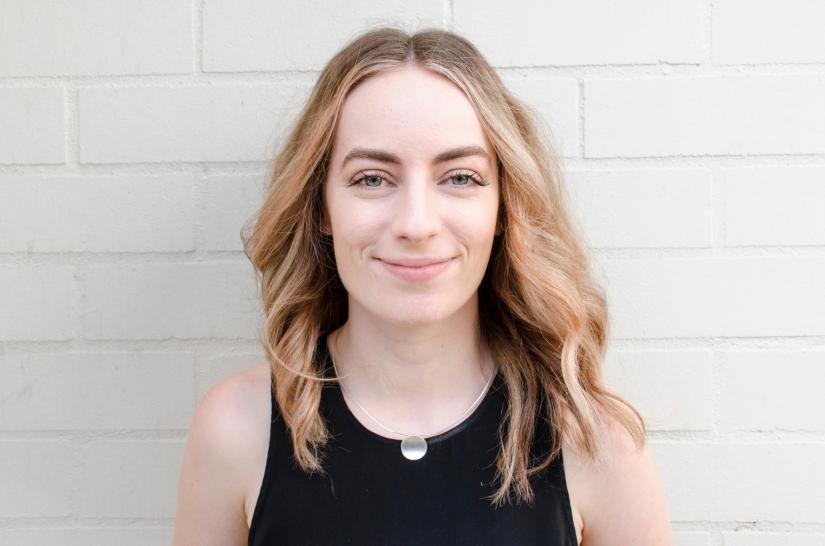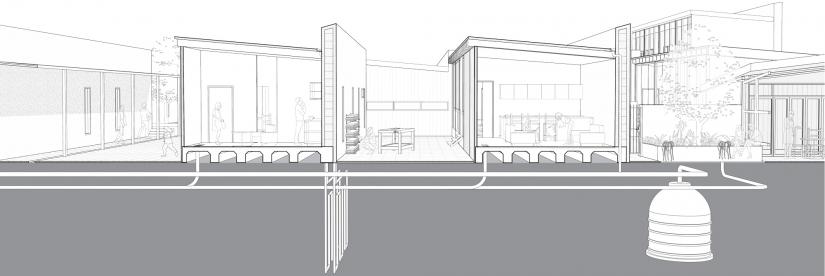Sydney might be one of the world’s most expensive housing markets, but if students in the UTS Master of Architecture have their way, that might be about to change.

UTS Master of Architecture students including Kate Harding (pictured) have been looking at ways to tackle Sydney's housing crisis.
In a studio subject called Not The Single-Family Home led by Alicia Pozniak, students have been tackling the problem of housing affordability through clever architectural design. Based on typical Sydney housing types, they’ve been working in groups to develop contemporary housing solutions that move away from the city’s focus on single-family homes.
“What we’re looking at now is reconfiguring different housing types, such as semi-detached homes, duplexes and garden apartments for contemporary Sydney and using them to tackle current affordability and density problem within the Sydney housing market,” says student Kate Harding.
Harding and her peers were assigned to work on semi-detached homes. These dwellings originated in England and were typically used to house workers employed at industrial sites or farms. In Sydney, the same usage patterns applied – these homes are typically found close to industrial sites in areas like Dulwich Hill.
The original houses were typically comprised of two bedrooms facing the street, a lounge room in the middle of the home, a kitchen, and a laundry leading through to a private service yard. While this layout was well suited to the era for which it was built, it also held huge potential to be reconfigured for use in a contemporary Sydney context.
In response, Harding and her teammate Nikolas Vidakovic proposed a design for a semi-detached housing development in the growth area of Badgery’s Creek in western Sydney. The design takes a more communal approach to living through the use of shared spaces.
“We’re looking at collaborative living and reducing the wasted space. For example, we’re looking at sharing kitchens between dwellings so the party wall doesn’t just divide people; it creates space that brings people together,” Harding says.
“We’re taking down the fences and introducing open, shared communal yards. There are also a lot of small waterways in the Badgery’s Creek area, so we’re looking at building around the waterways and creating a foreshore creek system which would also be a shared public space.”
The result is smaller, more flexible spaces that can be configured and re-configured to suit occupants’ changing needs. First-home buyers would benefit from access to more reasonably priced accommodation, while extended families could occupy more than one home and make use of the shared amenities.

The Parkland Semi (sectional perspective) by Kate Harding and her teammate Nikolas Vidakovic takes a communal approach to city living.
The project addresses a significant pain point in Sydney’s property market, which has gone through an unprecedented boom over more than five years. With the average house price now sitting at more than $1 million, there’s an urgent need to make home ownership more accessible for people wanting to get a foot in the door.
“For the students, the value of this sort of work is that you’re responding to things that are quite real, that you can see and that might affect your daily life or the daily life of people around you,” says studio assistant Grace Dwyer.
“It’s learning about the Sydney context, but I think also it’s about the operation at different scales, so from creating the detail of the room or the individual private space up into the scale of urban planning and being able to jump between those things. I think it’s quite an important outcome.”
Learn more about the UTS Bachelor of Design in Architecture and the UTS Master of Architecture.

